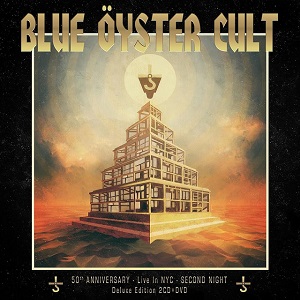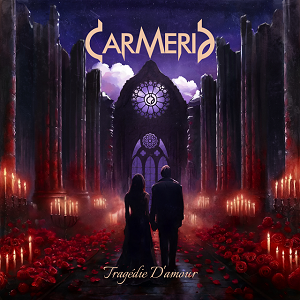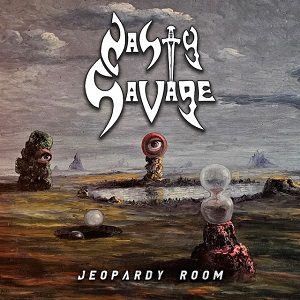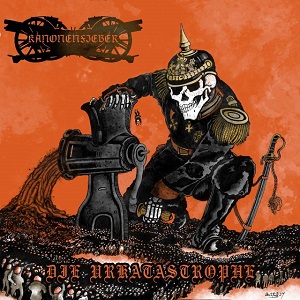METALLICA’s Lars Ulrich Reflects On Groupies, Rehab And Frontman Envy
March 29, 2005, 19 years ago
Britain’s TimesOnline (www.timesonline.co.uk) has issued the following article from Andrew Billen:
The thrash metal band METALLICA went into therapy, filmed it, and made the funniest music movie since Spinal Tap. The group’s founder, Lars Ulrich, reflects on groupies, rehab and frontman envy.
They manufacture the thuds that through the thin walls keep students awake at night. They look like a chapter of Hell’s Angels that is very, very angry about having had its bikes stolen and replaced by guitars. Their greatest fans are Beavis and Butthead.
They are Metallica, for 24 years the world’s pre-eminent exponents of something horrible called thrash metal — and they have been in therapy.
Back in 2001 a soapy little chap in a vile jersey called Phil Towle, a self-styled “performance enhancement coach”, entered their lives and, for a while, looked like he would never leave them. Every day he would visit Metallica’s HQ in San Francisco and hang around. Between sipping tea and eating pizza, he would attempt something nebulous like processing the group’s relationship dynamic. His labours provoked confrontation, walk-outs and, for one group member, nearly a year in rehab, but Metallica survived to tour again and produced a record, St Anger, not unduly influenced by Towle’s new-age optimism.
Whether Metallica got value from the $40,000 a month it paid him is for it to decide. What’s certain is that Metallica: Some Kind of Monster is the funniest music film since This Is Spinal Tap and it is not even meant to be funny. It is also a valuable historical document, recording the moment the rebellious spirit of hard rock met the dozy zephyrs of Californian pop psychology. The culture clash recalls Churchill’s phrase about the meeting of irresistible forces and immovable objects, particularly since Towle became all but immovable himself.
If I hadn’t watched the film on the plane over to San Francisco, I’d have been terrified of meeting the band’s founder and drummer, Lars Ulrich. A recent picture in the Metallica fanzine, So What!, catches him leering over his drums with a finger up his nose. But the film reveals him as a kindly and astute family man. Only his still youthful looks speak to a theory, articulated by one of the documentary’s directors, that Metallica suffer from a severe case of arrested development.
But Ulrich, 41, is not particularly taken with the idea that he has failed to grow up.
“It’s a process that no matter how much you try and suppress you can’t put a lid on it,” he says, so I don’t bother to ask if he personally plays with the Creature from the Black Lagoon pinball machine in the hall. In any case, it seems equally likely that Ulrich has been a grown-up all along and has just been playing at being young for artistic reasons and in order to maximise the opportunities for recreational sex and drugs.Ulrich was born in bohemian Denmark on Boxing Day, 1963; his family later relocated to Los Angeles. In 1981 he advertised in an alternative newspaper for members to join a new band. He met James Hetfield and together they recruited a bassist, Cliff Burton. Moving to Burton’s home town of San Francisco, they acquired a guitarist, Kirk Hammett. “Bang that head that doesn ’t bang,” was the slogan on the cover of their first album, Kill ’Em All, and the head-bangers out there knew exactly what they meant. Although radio and later MTV would ignore them, their concerts sold out.
They hardly missed a clashing beat even when, while on tour in Sweden in September 1986, Metallica’s tour bus overturned and Burton was killed. “The most mystifying thing about it was that 11 other people walked away unscathed,” Ulrich says. “We forced ourselves to continue, forced ourselves, probably, not to access those deeper levels of grief.”
But, of course, they had yet to meet Phil Towle.
Instead, with unseemly haste, they hired Jason Newsted to replace Burton. In 1991, their Black Album bought them an extra level of credibility. Their music grew, began to incorporate even the odd harmony. In 1999, they performed with the San Francisco Symphony Orchestra. Michael Kamen, the conductor, called the event a “Wagnerian orgasm”.
But Some Kind of Monster opens with them peering into the depths of a post-coital void: the group is exhausted, without a creative idea in its head. Several factors seem involved. One is the resignation of Jason Newsted, who stuns them by waltzing off to start a new band, Echobrain. At least as significant was the fact that Ulrich, Hetfield and Hammett had all by now married. They had other things on their mind.
Ulrich met his wife, Skylar, a doctor, in a bar rather than a dressing room. It was a novelty, he admits, to have to introduce himself; groupies had hitherto found him. “You would meet somebody. Then you would sleep with them and then you would decide like whether you liked them or not, whether you would continue to sleep with them and whether you could actually tolerate being with them during the day.”
Lars and Skylar dated, married and had two children but, sadly, are a couple no more. It was, Ulrich says, unconnected with the band’s protracted self-examinations.
“We see each other all the time. We share the kids. It’s all good. As far as those things go, it’s about as good as it gets and as civilized as it gets.”But Ulrich’s marriage is more interesting than its failure. Before it he had been monogamously wedded to Metallica. “My life was one-dimensional. It was all about Metallica. There was nothing else. It wasn’t really until some time in the mid-Nineties when all of a sudden you sit there and you start thinking about kids and settling down that the one-dimensionality of the whole thing starts becoming . . . a little unfulfilling. I felt the hardest thing for me in the wake of our success was trying to figure out who I was and establishing my own identity, coming to grips with ‘Who is Lars?’ and not just ‘Who’s Lars, the drummer of Metallica?’ ”
Ulrich, one can see, was ripe for Phil Towle’s picking and soon the whole band was drinking deep of his “relationship think-tank”, devoting whole days to the process. As Towle will undoubtedly have pointed out, however, sometimes in therapy things must get worse before they get better. As the band began to “unravel the onion” of their relationships, Hetfield simply unraveled. Storming out spectacularly from one of Phil’s sessions, Hetfield entered rehab for 11 months. When he returned, it was with the evangelical fervor of a 12-step convert. He announced he would henceforth donate only a limited number of hours a day to Metallica. After a little period of this clock-watching, Ulrich exploded. In the documentary’s finest moment, Ulrich tells Hetfield to f*** himself.
“Over the course of a few months all this resentment just kind of built up and it all came out that one afternoon. After sitting around and waiting for his ass for a year and then he comes in and says ‘I have to leave every day at 4pm’, it was like, ‘What the f***?’” Some believe Ulrich’s resentment had been growing for longer than months. An Esquire writer concluded that the power struggle between the “talented” Hetfield and the “more workaday” Ulrich was “the kind of classic frontman-envy” that had been breaking up bands for 50 years.“Frontman envy?” queries Ulrich. “No, I mean we’ve been battling for poll position in this band pretty much since day one and I came to realise that the only thing we could ever agree on is that me and him were the leaders and whoever else was around were the followers.”
Yet they are not really close? “Me and James lived together for four years. We lived in the same room. I’d sleep in that corner, he’d sleep in that corner and he’d have his girlfriend around in his and I’d sit there and listen to them have sex. On all these types of levels we lived that: we ate together, we traveled together, we played, we drank, we screwed.”
The same girls? “I can’t say that hasn’t happened. You know you’ve got to remember I met him 24 years ago. He is my brother in arms.” And the greater talent?
“At what? Musically? Than me? I mean he has a very effortless relationship with music. It just pours out, but he needs someone to edit him — and that’s where I come in. Is he the greater talent? Great question! Nobody’s ever asked me that! I would hope he’s the greater talent because if he’s not then God help us!” Great answer!The rivalries and the worrying about the rivalries would have remained a private matter, of course, had there not been a film crew around. Originally, it had been engaged to produce a couple of info-commercials for the next album. When the project turned into a record of something different, possibly the last days of Metallica, the band’s record label became worried.
Metallica, however, was now so taken with the vision of its monstrous collective navel that it put $2 million of its own money into the film, and even resisted asking for approval of the final cut.
The result is a mad satire on Robert Burns’s wish to see ourselves as others see us. It made the band realise how incredibly rich it had grown. In one scene, Ulrich is shown sipping champagne at Christie’s in New York as his collection of modern art is auctioned off for millions of dollars — an image less than helpful to the cause of one of the music industry’s foremost campaigners against the illegal downloading of music tracks. But hasn’t the film caused even greater damage to Metallica? For all its Satanic imagery and sheep skulls, Metallica just isn’t scary any more. They’ve been revealed as wusses and the outcome is deeply comic. What do their hardcore fans think?
He considers my point at this stage moot. “I’m sitting here with The Times. Outside Channel 4 is waiting to talk to me. I guess someone is still interested in what we have to say and that’s not only pretty amazing after 25 years, it’s humbling.”
Metallica: Some Kind of Monster (Paramount Home Entertainment DVD), £19.99.










